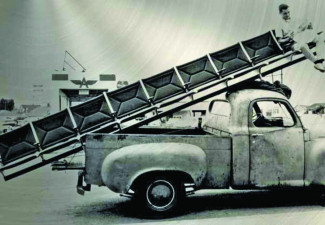
Johns Hopkins UniversityEst. 1876
America’s First Research University
Ten Principles of Good Sustainable Design History


1. Good sustainable design history is aware of contemporary design strategies.
Industrial designers in recent years have adopted several strategies for sustainable design. Among them are use of life-cycle assessments, developing related voluntary certification programs (such as Cradle-to-Cradle), and upcycling. Understanding what the profession is attempting to do to reduce its effects on the environment is important.
2. Good sustainable design history uses history to critique contemporary design strategies.
History allows us to see how decisions made in the past affected society and the environment. We may use it to understand how past design decisions in architecture, fashion, and industrial design had effects on the waste stream, on the health of consumers, and on resource use. Contemporary efforts at sustainability may be responses to problems of the past, and they may also repeat problems of the past. Because upcycling has a history, history can investigate the opportunities and limits of past upcycling practices.
3. Good sustainable design history recognizes history as an important contributor to contemporary design approaches.
By evaluating past practice, history provides for evidence-based design practices and contributes to studios and courses training the designers of tomorrow.
4. Good sustainable design history is cognizant of scale.
The scale of production and of disposal is crucial to assessing environmental impacts. While the term “upcycling” has been used for small-scale artisanal and homemade crafts, its application by large industrial producers like adidas (incorporating ocean plastic in athletic shoes and swimwear) and Patagonia (incorporating PET bottles in polar fleece) speaks to the scale of production and aspirations to divert waste in industrial society. Ford’s development of aluminum bodies for the F-150, for example, represents the largest-scale use of aluminum in automobile production yet. Histories of waste utilization on industrial scales speak to the ambitions, opportunities, and limitations of these efforts.
5. Good sustainable design history is aware of materiality.
Designers require particular properties from the materials they use and reuse—durability, malleability, performance. History of materials we seek to recycle, including aluminum, polymers, and steel, must attend to the properties and uses of the materials. Since aluminum is repeatedly recyclable, in ways that save energy compared to primary aluminum production, its material properties invites study into the metal’s past and present uses.
6. Good sustainable design history is aware of design’s place in large technological systems.
All industrial production takes place within systems of energy, materials, labor, and distribution. Aluminum production has a context in the mining and energy systems developed in the twentieth century, and secondary aluminum production has a context in the formal and informal infrastructures that have developed to recycle materials. Understanding how these systems operate is crucial to evaluating the merits and problems of manufacturing aluminum goods.
7. Good sustainable design history is aware of complexities of disposal recycling and critical discard studies.
Utilizing waste, as is done in upcycling, involves cultural, economic, and political structures that deserve examination. Critical discard studies situate discarded material in time and place, and design strategies that seek to reclaim waste should be aware of how and why materials are “thrown away” and recycled.
8. Good sustainable design history recognizes how consumers value the designed goods.
Aluminum Group designer Charles Eames used the term “covetables” to describe his creations. His term denotes both the price consumers are willing to pay for the good and their subsequent stewardship of their possession. Linking design history to the history of consumption enhances both intended and unintended use of designed goods over time, such as the ways musicians Jerry Garcia and Steve Albini have used Travis Bean guitars.
9. Good sustainable design history is aware a product has an evolving design history.
Design and manufacturing are not static. Although Herman Miller continues to produce furniture the Eames Office designed half a century ago, how Herman Miller produces these designs has evolved over time. A good design history of this production notes how, when, and why the company adopted Design for Environment strategies and how those strategies shaped the resulting products.
10. Good sustainable design history borrows from good design.
Not only does this list of principles shamelessly borrow from Dieter Rams’s “Ten Principles of Good Design,” it shares Rams’s tenth principle that good design is as little design as possible—and raises the question of how sustainable mass production can be.
Aluminum Upcycled: Sustainable Design in Historical Perspective was written with these ten principles in mind. Consumers may determine how well it holds to them by purchasing the covetable from Johns Hopkins University Press.
Carl A. Zimring is an associate professor of sustainability studies at Pratt Institute. He is the author of Aluminum Upcycled: Sustainable Design in Historical Perspective in addition to Cash for Your Trash: Scrap Recycling in America and Clean and White: A History of Environmental Racism in the United States.


